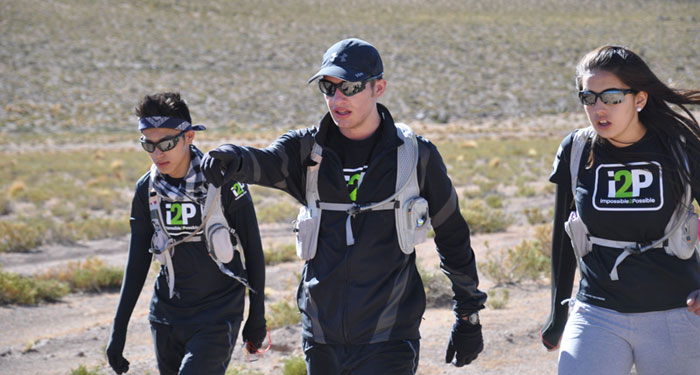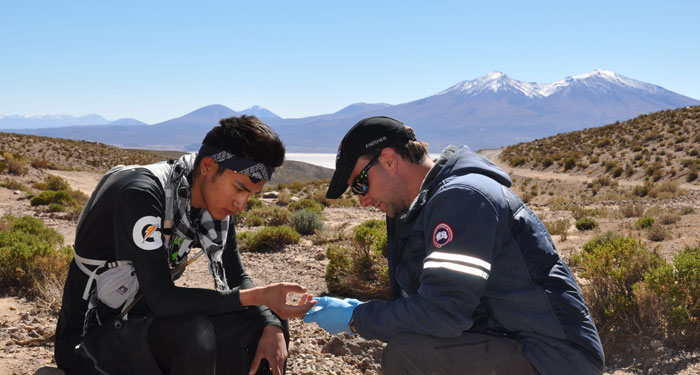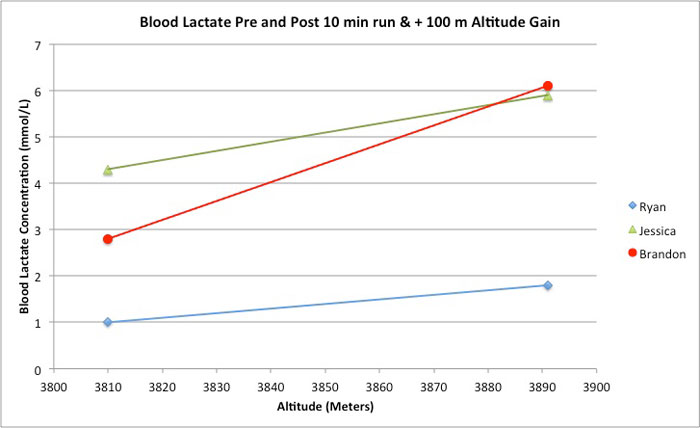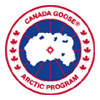
ANAEROBIC GLYCOLYTIC METABOLISM
Date
May 17
Purpose
Demonstrate the how the anaerobic energy system provides energy to fuel our muscles when we exercise at high intensities.
Discussion
The body relies primarily on anaerobic metabolism for the energy required to perform intensive exercise of greater than 12- 15 seconds and less than 3 minutes duration. Anaerobic glycolysis is the primary energy system that is used in sporting events such as the 800-metre run, 200-metre swim, downhill ski racing, and 1500-metre speed skating and in other activities such as sprints.
Method
We will take blood samples from the expedition members and analyze them using a Lactate Pro measurement device. We will take measurements at low and high exercise intensities.
We will also take blood glucose measurements before and after exercise to show how our bodies use sugar to fuel intense exercise.
School Exercise
Students can repeat the exercise experiments, but instead of blood lactate measurements, students can rate themselves on the BORG exertion scale.
Experiment Report & Results
Humans are capable of performing amazing feats. Sprinters run down the track with astonishing power and speed; power lifters make hundreds of pounds look like a sack of potatoes; swimmers traverse an entire lake or channel against currents and waves; hurdlers gracefully clear all obstacles in their way; and some basketball players even seem to defy the laws of gravity. And our Youth Ambassadors run across the Altiplano in Bolivia.

All of these activities depend on our muscles. Muscles are incredible structures. They have the ability to change themselves to meet the demands that you impose on them. In order to generate movement muscles have to contract. And to do this they need energy. Lots of energy. Some of our muscle fibers break down sugars like glucose for energy, and they don't need oxygen to produce energy, hence the reason why they are sometimes called anaerobic, which means "without oxygen". These fibers are used for short sprints and other high intensity activities.
Today I asked the Youth Ambassadors to run up a steep stretch of road at almost 4000 m elevation. This was incredibly tough and they did a great job pushing themselves to the max. Check out the video:
We took blood samples before and after they ran up the hill. Here is a picture of me taking a sample from Brandon Sand.

You can see the results of the blood lactate testing here:

As you can see everyone had a higher blood lactate level after the short run up the steep hill. Ryan Montgomery did not increase as much as the others, but Ryan has a cross-country running background where Jessica and Brandon have more sprint backgrounds.
Since the anaerobic glycolytic system can only provide energy for about 1-3 minutes when the athlete is exercising at their maximum, and the "exhaust" of the anaerobic system is a substance called "lactic acid" which is involved in causing muscle fatigue. Its not the only factor – but the acid part of lactic acid does cause your muscles to become fatigued during exercise.
The fact that our Ambassadors can run hard enough to increase their lactate levels at this elevation over these distances is pretty incredible.

-- Greg Wells, PhD.
« Back to Science Of The Run







